Course Language: English

elevate your music
make it sound bigger,
wider, more cinematic
See me mixing from beginning to end. Over the shoulder, easy to follow videos!

TRY IT RISK FREE - 7 day moNey back guarantee

elevate your music
make it sound bigger,
wider, more cinematic
See me mix & master from beginning to end. Over the shoulder, easy to follow videos!
TRY IT RISK FREE - 7 DAYS MONEY BACK GUARANTEE

SOME OF MARC'S CLIENTS

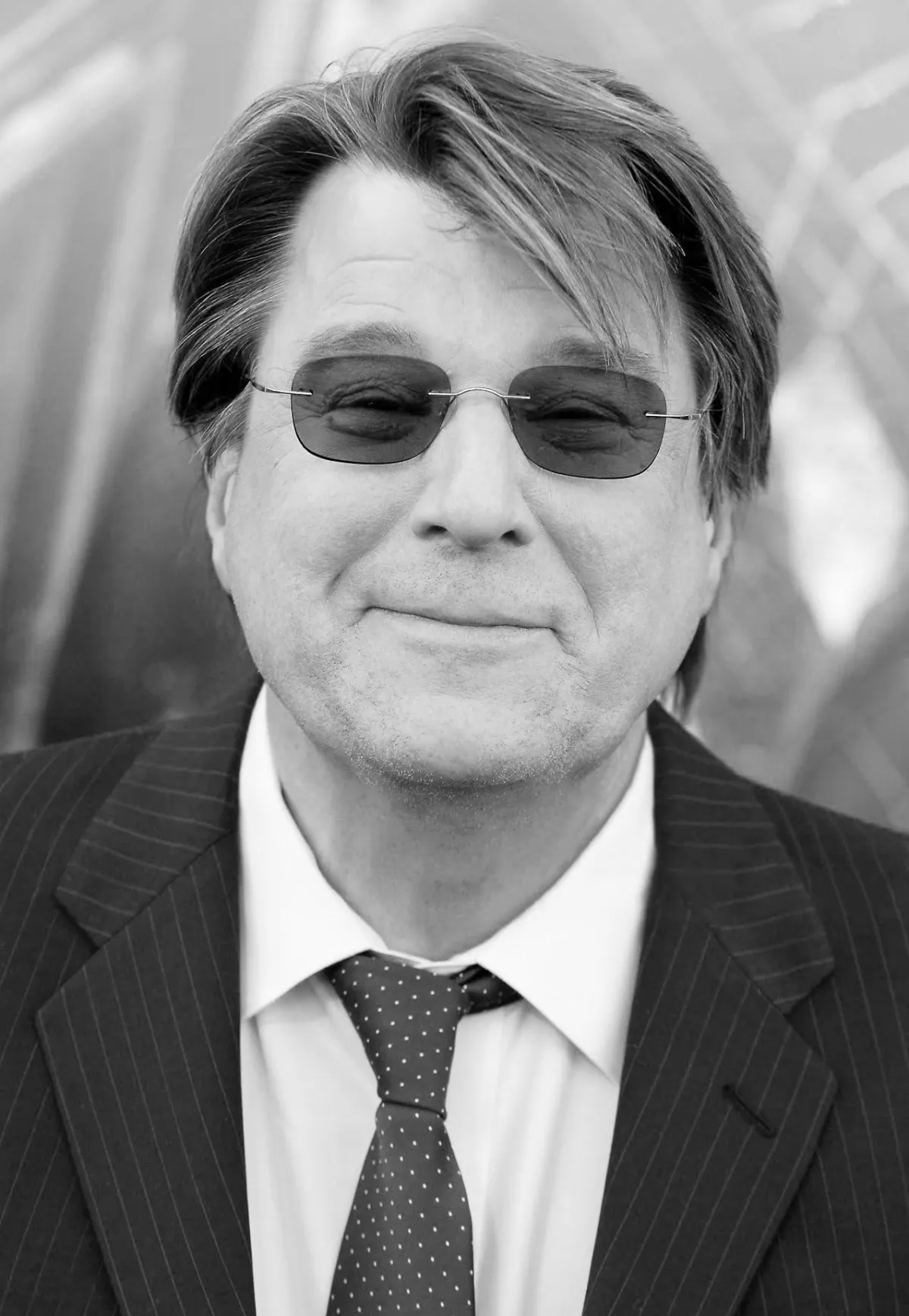
Christopher Young - Composer: Spider Man
Marc Jovani is the real deal. His courses are a hit! This course is exactly what you need to get started as a composer!
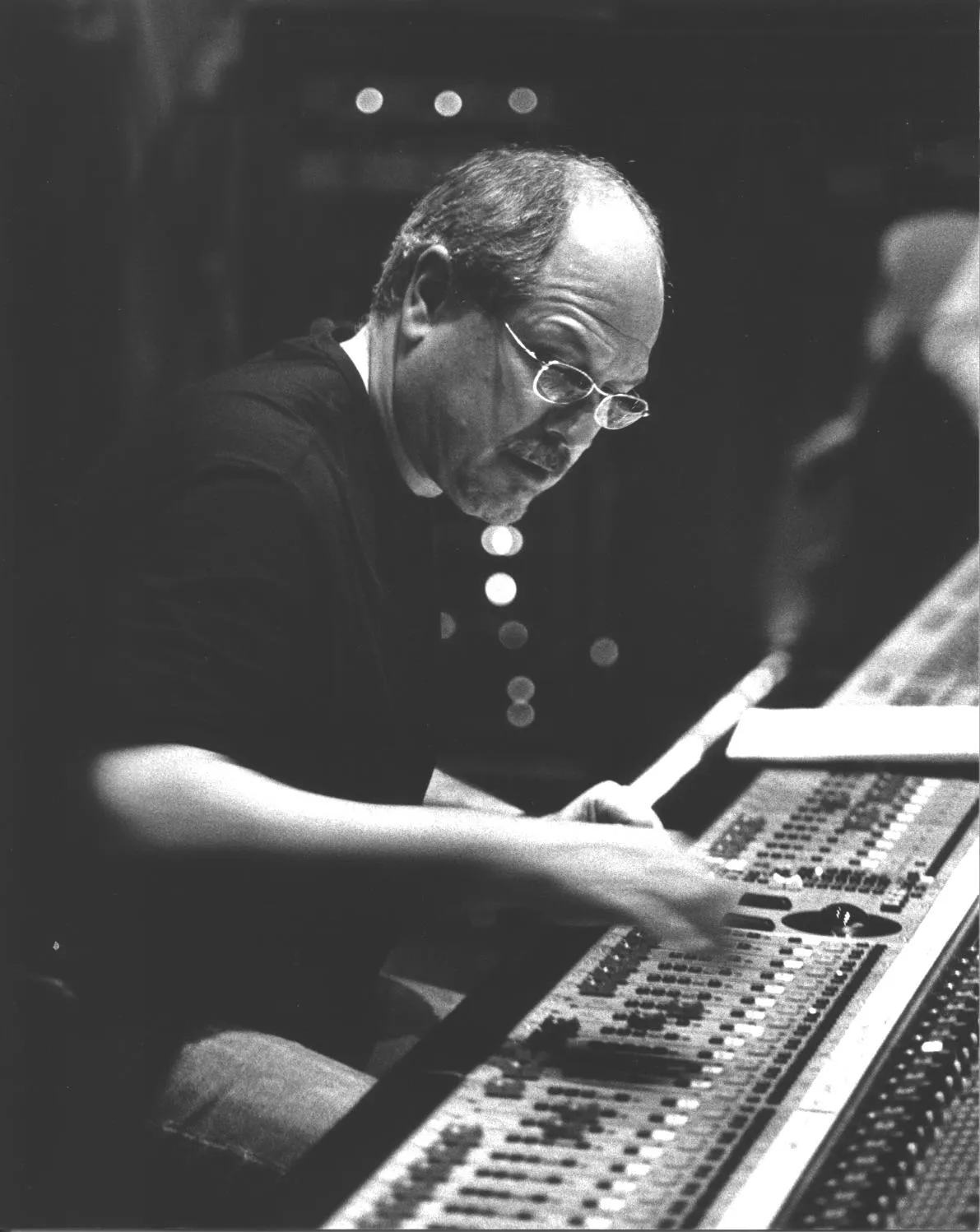
Dennis Sands - Mixing Engineer: Avengers
Marc's courses are excellent. They provide both a foundation and advanced techniques. If you're getting started, this course is perfect for you!
LEARN TO COMPOSE MUSIC
COMPOSE YOUR FIRST PIECE
IN JUST 5 DAYS YOU'LL HAVE COMPOSED A PIECE THAT SOUNDS LIKE THIS:
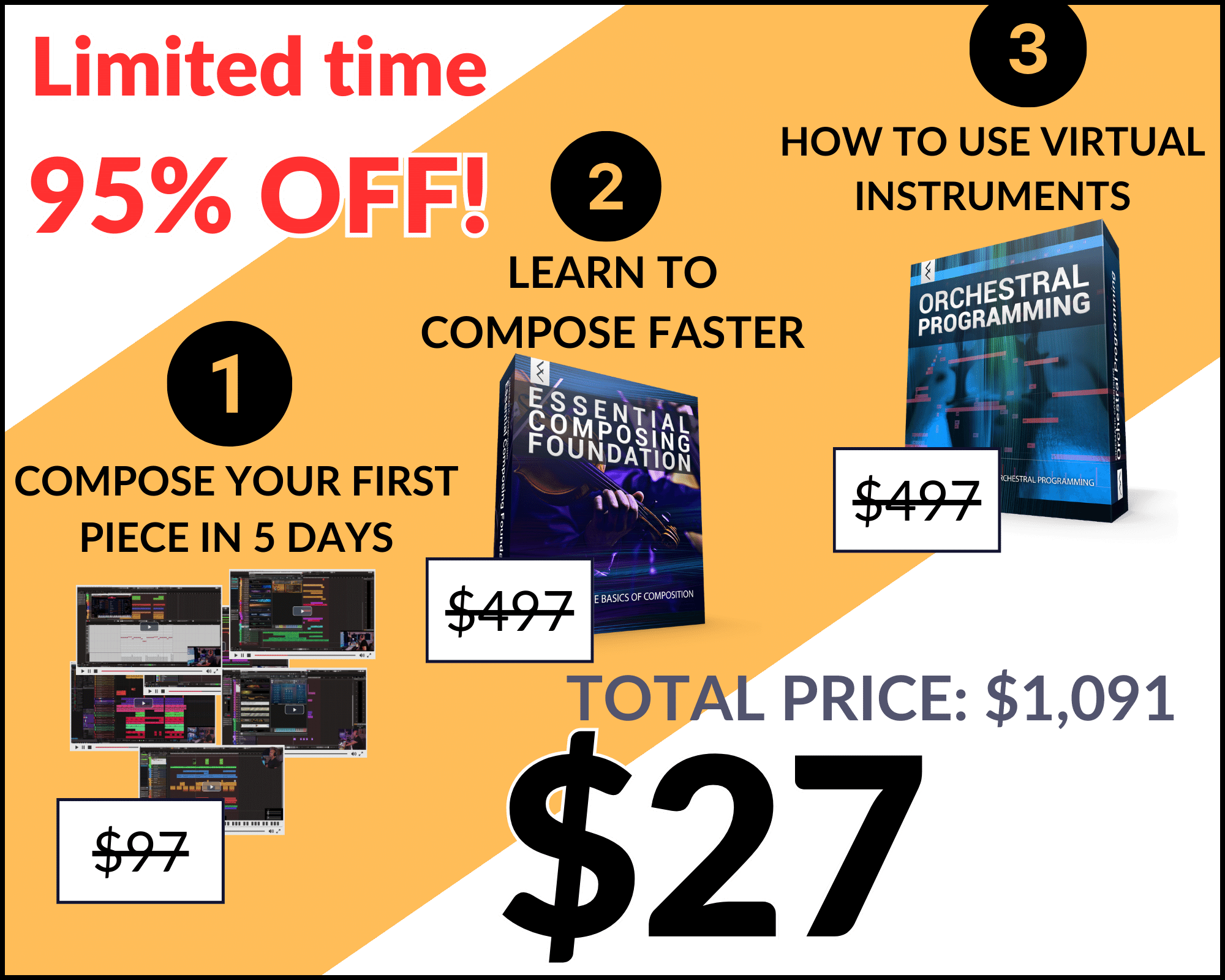
FLASH SALE
Ends on .
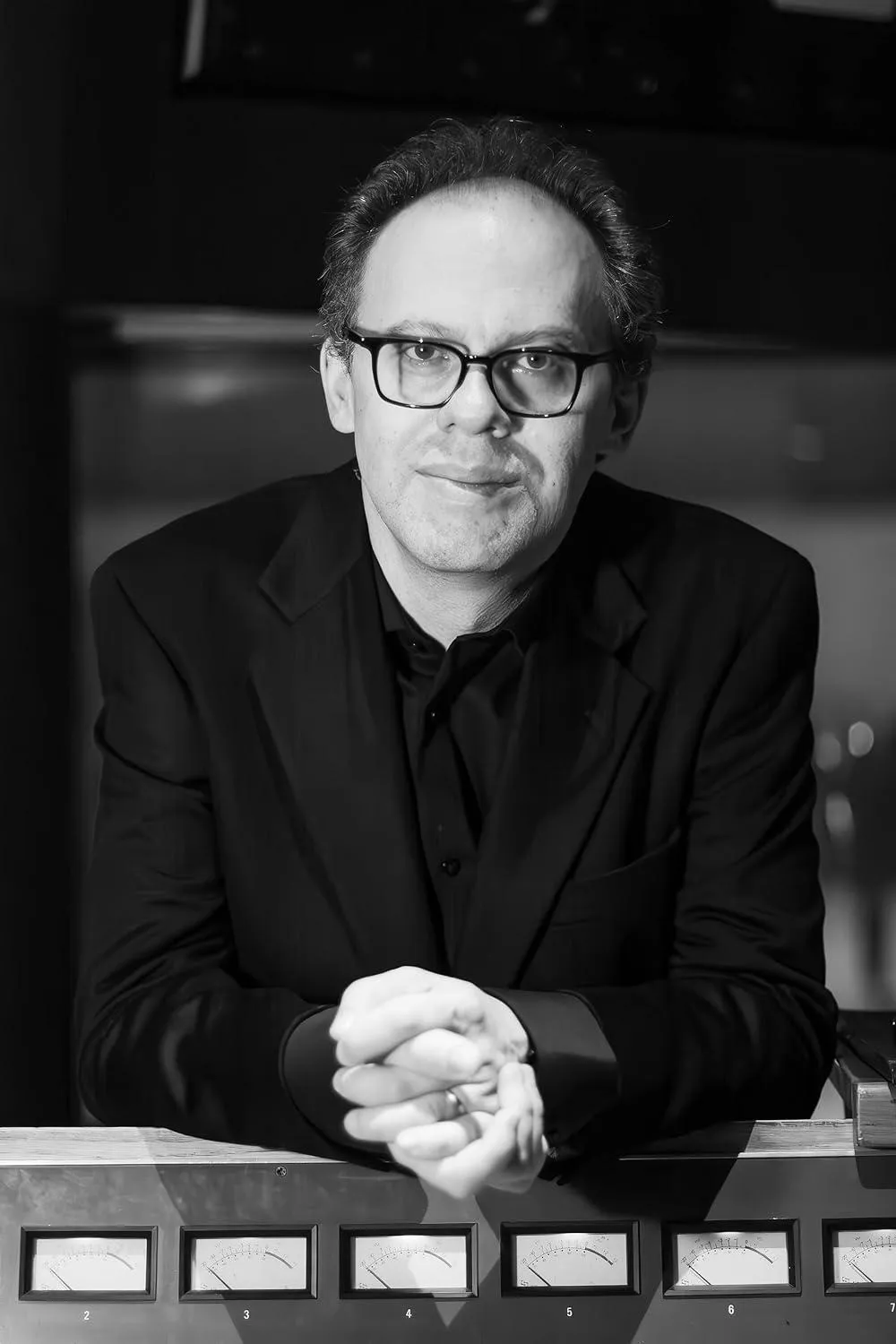
Jose Cancela - 5 Time Emmy Award Winning Composer
What Marc is creating with Cinematic Composing and all its courses was very much needed in this industry. Everything that you need to know to get started and beyond is right here!
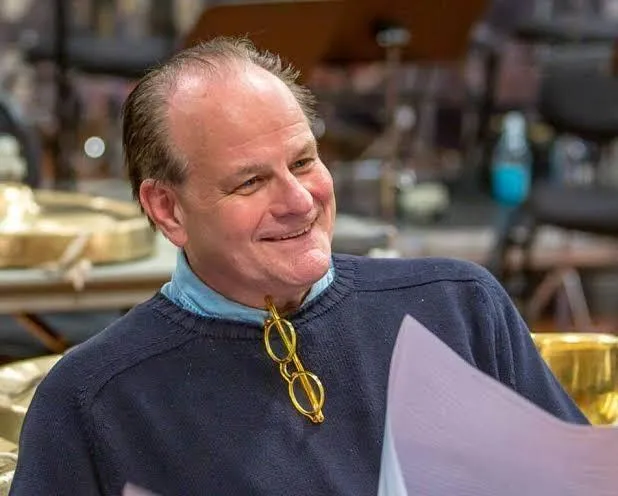
Conrad Pope - Orchestrator: John Williams (Star Wars)
Marc is opening doors and giving access to the best knowledge to so many people who want to get started as composers. The content you find here is hard to find anywhere else. Keep it up!
MIXING & MASTERING CINEMATIC MUSIC
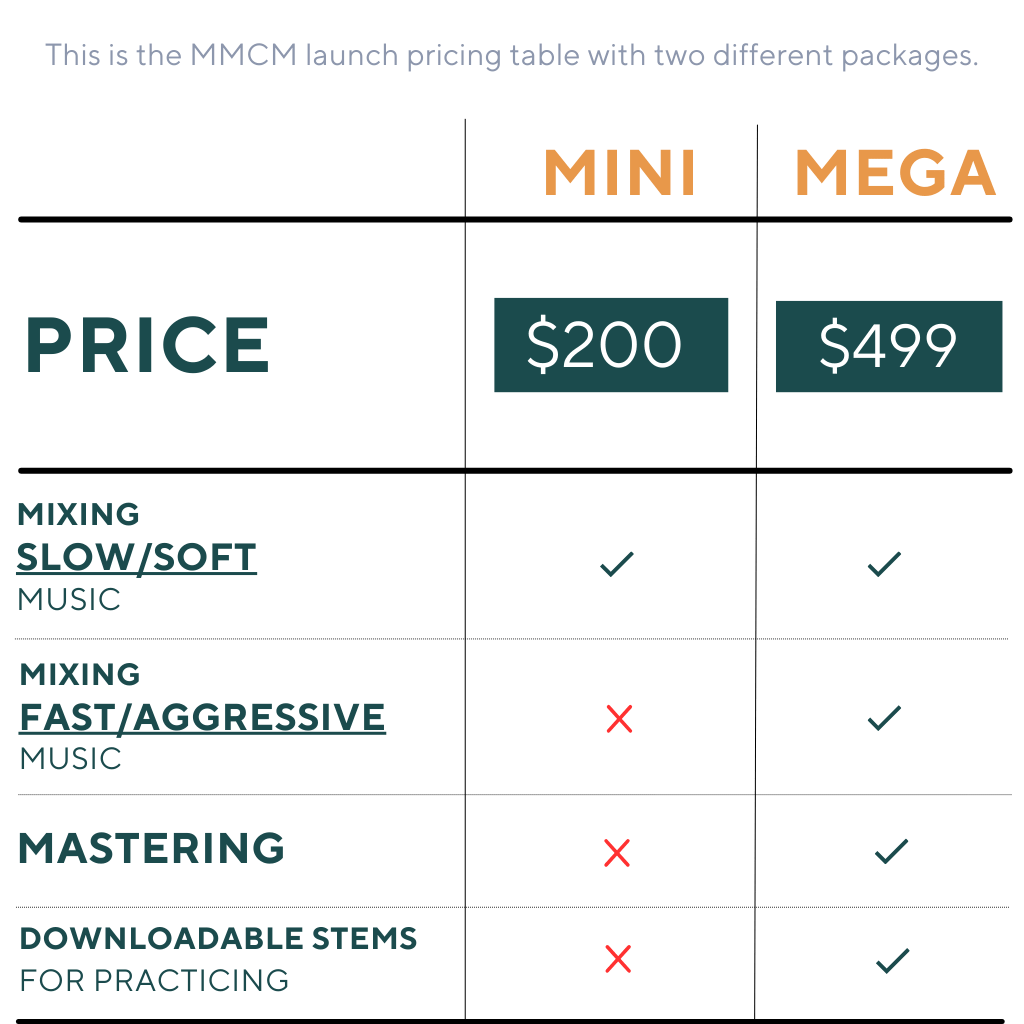

Jose Cancela - 5 Time Emmy Award Winning Composer
What Marc is creating with Cinematic Composing and all its courses was very much needed in this industry. Everything that you need to know to get started and beyond is right here!

Conrad Pope - Orchestrator: John Williams (Star Wars)
Marc is opening doors and giving access to the best knowledge to so many people who want to get started as composers. The content you find here is hard to find anywhere else. Keep it up!
LEARN TO MIX & MASTER MUSIC THAT SOUNDS LIKE THIS
WHAT'S INSIDE
MIXING & MASTERING CINEMATIC MUSIC?
In this program, you'll find all you need to Learn to Mix & Master Your Music
If you’ve always struggled with mixing, this is the course that will free you up..
I created a course that cuts to the chase, and gives exactly the things you need to know. No less. No more.
The 20% that makes the 80% difference.
Straight to the point. Short. Easy to understand. Easy to apply.
Get the course. Learn the concepts. Take your music to cinematic levels.
This will change everything for you!

THIS COURSE IS NOT A SERIES OF WALKTHROUGH VIDEOS
You’re going to see me mixing and mastering from beginning to end. From importing the tracks till exporting the final master. In a simple-to-follow step by step that you can easily replicate
SEE ME DO IT
Learn the easy 20% things that make the 80% difference.
No advanced techniques. Easy procedures that make a big difference.
FROM THE MOST BASIC CONCEPTS...
In this course you’ll learn from the most foundational and basic concepts like these ones:
Here's an example of two of the "basic concept" videos on
HOW TO USE AUTOMATION TO ENHANCE DYNAMICS OF YOUR VIRTUAL INSTRUMENTS
HOW TO USE PANNING TO MAKE YOUR INSTRUMENTS STAND OUT AND CREATE MORE SPACE IN THE MIX
STARTING A MIX:
Here's a 20 min video of me Mixing Strings (high & low stems)
...TO THE MOST ADVANCED TECHNIQUES
HOW TO EQ THE HORNS TO MAKE THEM SOUND AGGRESSIVE
LEARN TO MIX & MASTER YOUR MUSIC
– ELEVATE YOUR MUSIC –
Where I live – in Los Angeles – I’ve had the privilege to learn from the best mixing engineers in the world.
And over the years I learned so many mixing & mastering techniques, tools, tips, and tricks...
Now... this is NOT a course that shares all of these tips & tricks...
Instead, I’m going to teach you the Mixing & Mastering tools that are the MOST USEFUL for composers.
The ones that make the biggest difference. The ones that make your music better.

How many times have you seen someone show a mixing tip and they explain what they are doing and you go…
“I don’t hear the difference 😰”
Well... this time it will feel different.
You'll feel the difference!
This course will help take
your music from amateur 😒... to PRO 🤩 !!
(see vid)

PICK THE VERSION THAT WORKS BEST FOR YOU

High-Impact Videos
Each lesson has been split into bite-sized chunks so you don't get overwhelmed with a flood of information. Take the course at your own pace, and really study the lessons as you apply the actionable lessons to your business.
Group Coaching
You will have the opportunity to work through any roadblocks you encounter during our Group Coaching Meetings. These are specific times the teachers at Cinematic Composing will be available inside of a video chat room where you can jump in to have your burning questions answered. Stay for as long as you'd like to listen in on other people’s questions, or leave as soon as you have your questions answered. These often turn into impromptu lessons as I elaborate on specific topics or start digging into someone's composing career.
Private Group With Everyone In The Community
Interact with other students who are going through some of your same struggles. Everyone inside of the community will be participating in group discussions inside our group. This will be a constant source of encouragement, accountability, community, and a place where lifelong friends will be forged.
Go At Your Own Pace
You can go at your own pace. Don’t need to follow the course’s schedule.
The course materials do not expire and you’ll have access to them for life. Even for the future course updates and improvements!
The duration is 6-8 weeks approx. You can do it a bit faster, or take as much time as you want/need.
Or you could even take advantage of the discount now, and be doing the course later.
ACCESS
FOR LIFE
GO AT YOUR
OWN PACE
FREE
UPDATES
7 DAY MONEY BACK GUARANTEE
If you're not satisfied with the courses, get in touch within 7 days and we'll give you a full refund.*
*Conditions apply. Read Terms and conditions.

Peter Moore - Melbourne, Australia
Great supportive group to be a part of. Real people with real struggles and dreams. Lovin' it!
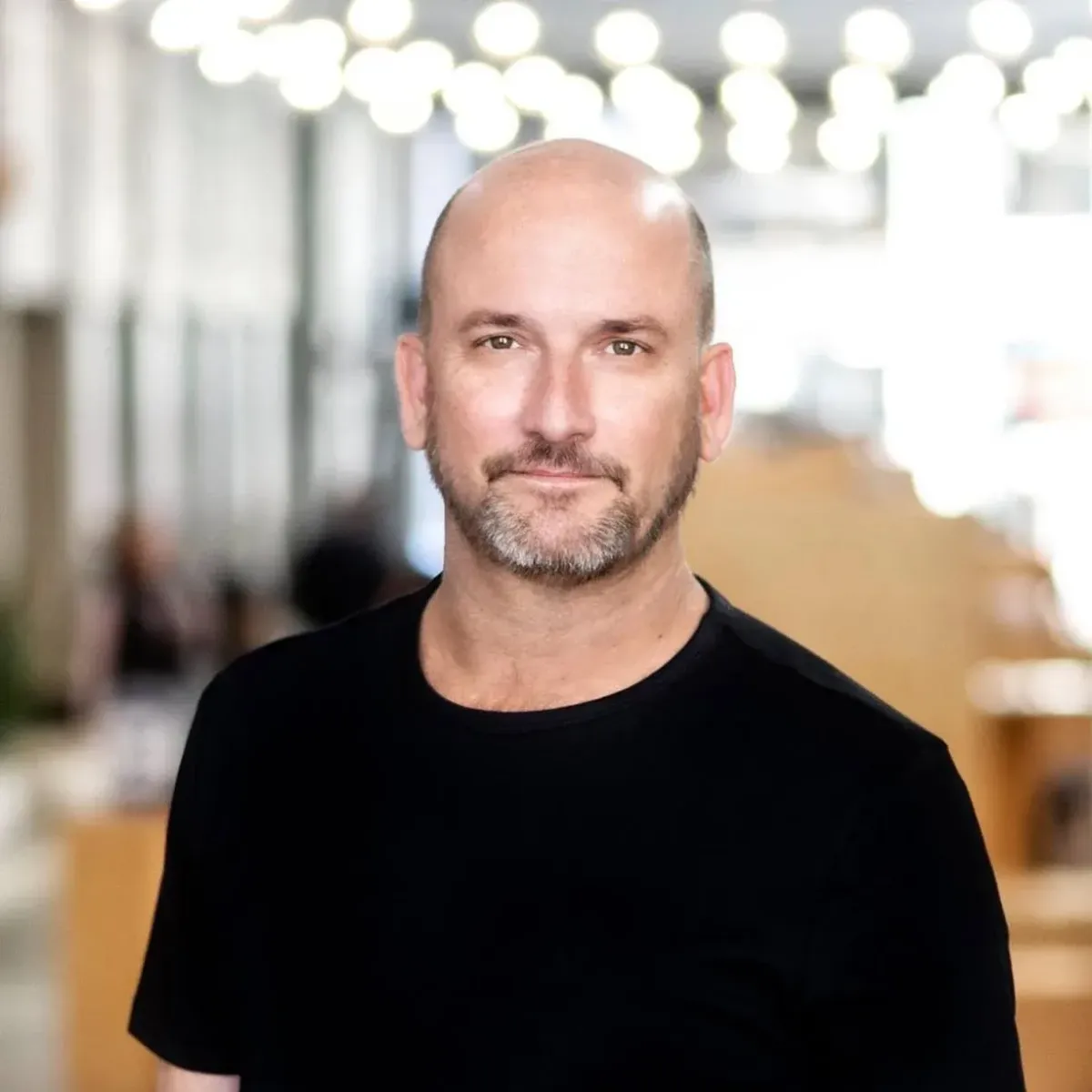
Thomas Rhea - Virginia, USA
I am only into day 2, I am so impressed! The chat/interactive video chat... and the customer service is WAY more than I thought this experience was going to be!
WEEKLY LIVE CLASSES
PRIVATE COACHING COMMUNITY
PERSONAL MENTOR


Marc Jovani
Based in Los Angeles. Has composed soundtracks for more than 50 movies
Has provided music for major studios such as NETFLIX, Amazon, Lionsgate, Syfy, FOX.
His movies have been distributed internationally on leading, nationally broadcasted television channels, including Lifetime (USA), TF1 (France), the Hallmark Channel (USA), Canale 5 (Italy), Antena 3 (Spain), HBO (USA) and more.
His music has been recorded in major studios: Warner Bros (Burbank), EastWest (Hollywood), and others.
Co-founder of Cinematic Composing (2016) with more than 10.000 students and growing
Berklee College of Music: Composition & Orchestration teacher at Berklee (2010-2016)
WHAT DO OUR STUDENTS SAY?
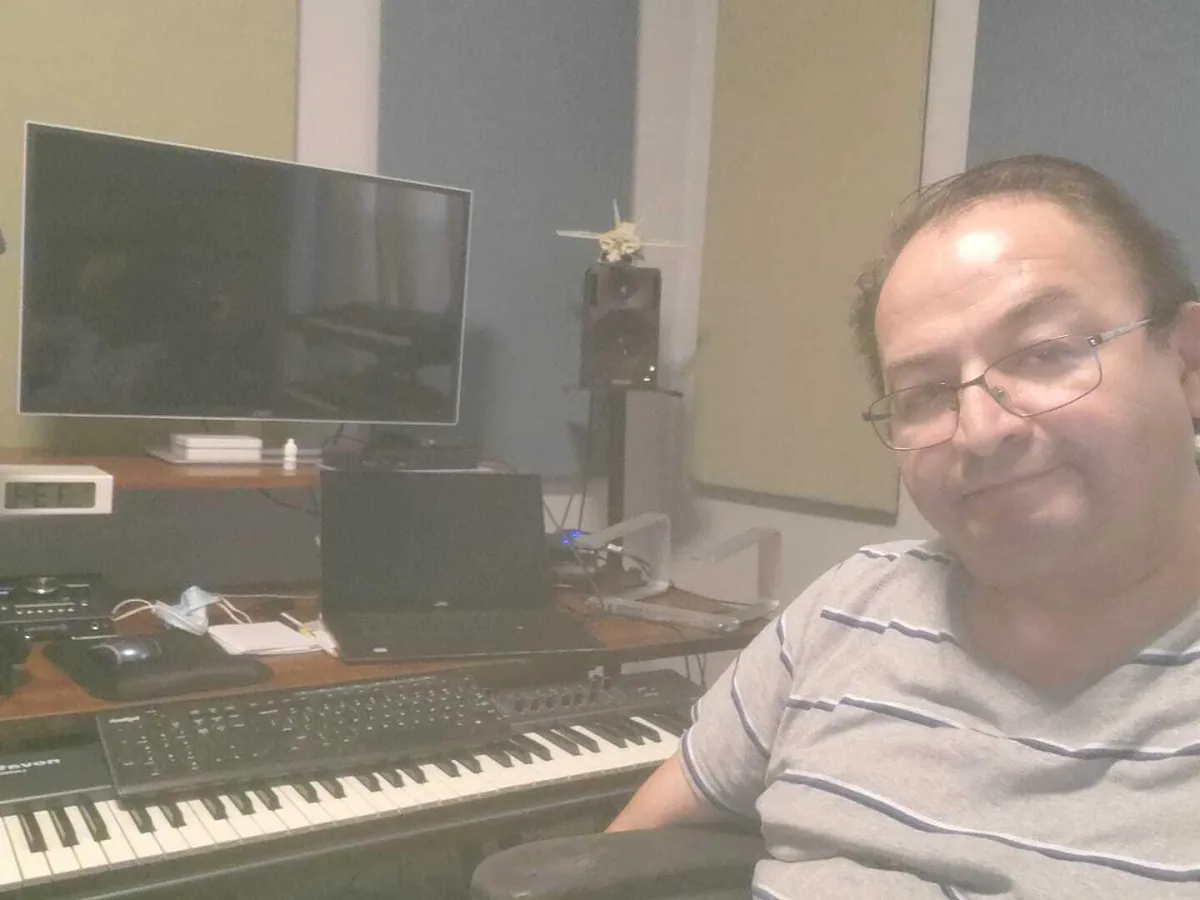
Nelson Sandoval
I've been quite impressed with the amount of knowledge and experience shared by Mark in his course.... He has truly mastered his process and he invites us to learn and read the benefits of his experience. I highly recommend Cinematic Composing to anyone who wants to get busy making orchestral music! ❤
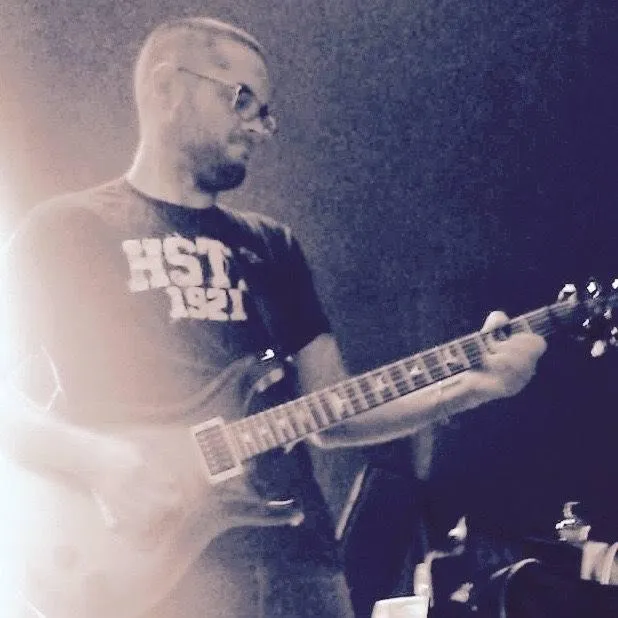
Umberto Pisano
Explanations and videos are clear and to the point, and Mark is a great teacher and mentor.Great job guys! I would really recommend this course!
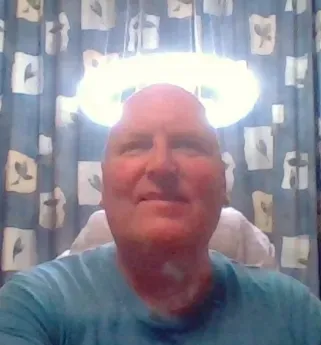
Josef Lindlbauer
Really amazing stuff. Marc takes you by the hand, and even tells you what sequencer, MIDI controllers and audio equipment best to use. Thank you Marc for putting this out!
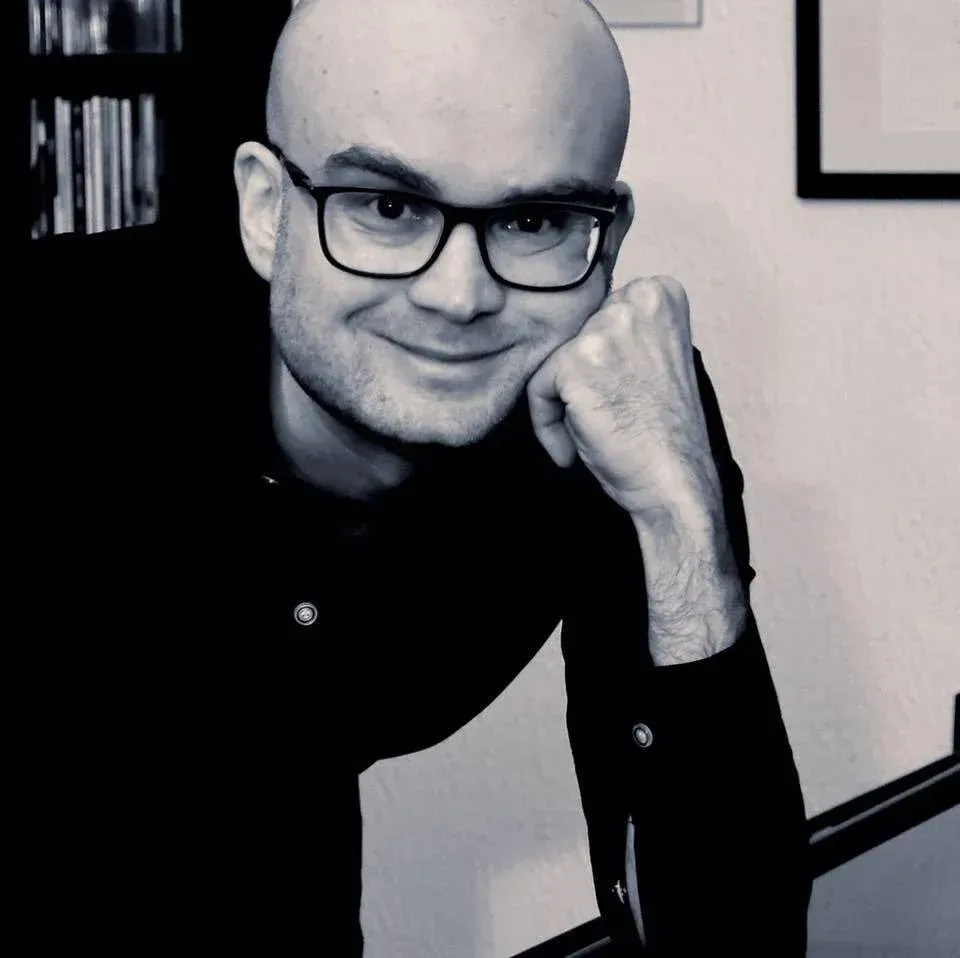
Francesco Menici
The course is very interesting, detailed and professional! The lessons are very well structured and useful for both professionals and beginners. Marc Jovani conveys great enthusiasm and helps to achieve your goal. THANK YOU MARC!!! THANK YOU CINEMATIC COMPOSING!!

Sarvar Kaziev
I’ve learned a lot in such a short time.. It is easy to follow our great instructor Marc Jovani. He has a great experience and makes it possible for us to follow him into the magical world of composition. To my knowledge it’s one of the best remote courses out there.

David Ramos Martel
On the road to orchestral composition using virtual instruments, this is the best online course I found. It is clear, concise, and practical. Of course, highly recommended.
WHAT DO OUR STUDENTS SAY?

Nelson Sandoval
I've been quite impressed with the amount of knowledge and experience shared by Mark in his course.... He has truly mastered his process and he invites us to learn and read the benefits of his experience. I highly recommend Cinematic Composing to anyone who wants to get busy making orchestral music! ❤

Umberto Pisano
Explanations and videos are clear and to the point, and Mark is a great teacher and mentor.Great job guys! I would really recommend this course!

Josef Lindlbauer
Really amazing stuff for beginners. Marc takes you by the hand, and even tells you what sequencer, MIDI controllers and audio equipment best to use. Thank you Marc for putting this out!

Francesco Menici
The course is very interesting, detailed and professional! The lessons are very well structured and useful for both professionals and beginners. Marc Jovani conveys great enthusiasm and helps to achieve your goal. THANK YOU MARC!!! THANK YOU CINEMATIC COMPOSING!!

Sarvar Kaziev
I’ve learned a lot in such a short time.. It is easy to follow our great instructor Marc Jovani. He has a great experience and makes it possible for us to follow him into the magical world of composition. To my knowledge it’s one of the best remote courses out there.

David Ramos Martel
On the road to orchestral composition using virtual instruments, this is the best online course I found. It is clear, concise, and practical. Of course, highly recommended.

BONUS #1 - LIVE CLASSES
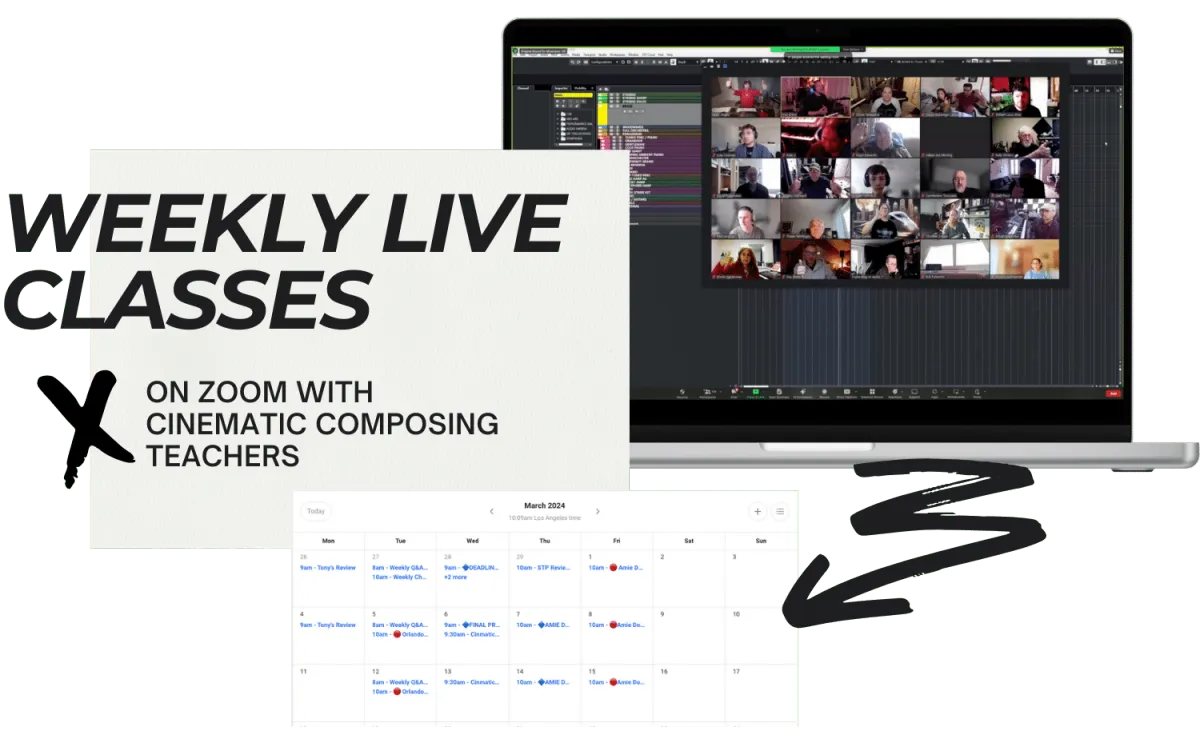
When you buy the course, you'll join the Cinematic Composing community. In this group, we do live classes and masterclasses with Cinematic Composing teachers and Hollywood Composers. You'll have access to these live classes for life.
BONUS #2 - SUPPORT
WATCH ONE LESSON FROM THE COURSE
Mixing Staccato Strings (Part #1)
"MIXING & MASTERING CINEMATIC MUSIC"
Complete Curriculum
MIXING
SLOW & SOFT MUSIC
Setting Up Your Mixing Session
SETTING UP THE MIXING SESSION
• When is it important to set the right tempo in a mixing project, and when is it not necessary?
• Is it okay to compose at a low volume level, and will it affect your mix later on?
• Does it make sense to activate the "noise" option in analog emulation plugins such as tape machines or channel strips?
• Why is it important to clearly see the waveform of your tracks?
• How can you ensure no tracks are missing and that the mix sounds consistent with your composing project?
• Why is color coding important for visual clarity?
MIXING FUNDAMENTALS
• First order of importance:
• Balance
• Panning
• Volume Automation
• Further improving the mix:
• Reverbs
• EQ
• Analog Saturation
• Compress (Percussion)
• Open (Widen)
• Enhance Low End (for very low instruments)
STRINGS MIXING PROCEDURE
• Balance
• Panning
• Open (Widening)
• Analog Saturation
• EQ
• Reverbs (L/Sh/H/L)
• Automation:
• Fluctuation (Long Notes)
• Micro-balancing
• Emotion
CONTROL SURFACES FOR MIXING
• Understanding the difference between a MIDI Controller and a Control Surface (DAW Controller)
• Which ones do I use?
• MIDI Controller options
• Control Surface options
PLAYBACK SYSTEM FOR MIXING
• How to correct inefficiencies in your playback system (speakers or headphones)
• How to ensure that what you hear translates well in other playback systems
Strings: Individual Sections & Ensemble
MIXING FOUNDATION
• Goal: Elevate your music to sound bigger, wider, and more cinematic.How to mix quickly: efficiency vs. perfectionism (the 80/20 rule).
• How to gain headroom for more musical dynamics and emotion.
• How to balance the track while adding dynamics and emotion.
• The three main types of volume automation and when to use each one.
• Stereo balance vs. stereo panning.How to pan orchestral instruments the right way.
VIOLINS I
• Adding character with tape emulation.
• How to get rid of low rumble and muddiness with EQ.
• How to open and widen the strings.
REVERBS
• How to create an immersive cinematic sound using a combination of two reverbs.
• The two main types of reverbs used to mix orchestral music.
• How to emulate an orchestral space (like a scoring stage) with convolution reverbs.
• How much "room component" is needed for an "already wet" sample? For example, "my strings already sound wet because they were recorded in a big room—why do I need to add more reverb, and if I do, how much?"
• What happens when you add convolution reverb to your sounds.
• How to overcome "how things should sound in theory" and use your ear to get the sound that you need.
• What is the second reverb you need to add to finish creating an immersive cinematic space?
• How to set up an algorithmic reverb for orchestral instruments with the right settings.
• When to go with a longer or shorter decay time.How long should the decay of an algorithmic reverb be for a slow, high strings melody?
CELLO SECTION
How to create space in your mix using stereo panning.
Techniques to reduce the overlap between low and high strings.
How to write effective volume automation to nail the perfect dynamics for virtual instruments.Adding character and warmth with tape saturation.
Two great EQ plugins for cellos.
How to add definition to cello melodies.
How to match the space and room component with other string instruments.
DOUBLE BASSES
Gaining space with panning.
How to balance the basses with the rest of the string section.
Cutting the low end to control low-frequency build-up.
Deciding whether extra room component is needed or not.
STRINGS ENSEMBLE
What type of tape saturation works well with soft, mid-range strings to add character and warmth.
How to position a strings ensemble track correctly in combination with other individual section tracks.
How much reverb is needed when a stem already has plenty of room component.
Making strings sound more transparent without boosting high frequencies.
Piano: Dealing With Stereo Balance, Adding Presence and Intensity, Right Reverb Length to Avoid Muddiness
• Piano Panning. When Is It a Good Idea to Reverse the Stereo Direction?
• How to Add Presence and Intensity When the Piano is Carrying the Melody, Without Having to Lift It on Top of the Track?
• What's the Right Reverb Length for the Piano?
Solo Flute: Adding Warmth, Cleaning the Sound, and Making It Sound Cohesive With the Resto Of the Orchestra
• How to Add a More Pleasing Character to the Flute Sound?
• How to Clear Out the Muddy Region of Frequencies That Reduces Clarity in the Sound?
• Creating the Same Depth and Perspective Than the Other Instruments in the Orchestra Even When the Sample Already Has Reverb on It
• Should You Match the Send Pan With the Track Pan to Help Maintain the Placement?
Cymbal Swell: Adding Crispness, Differentiating Each Distinct Timber, Enhancing Energy and Spatial Character
• Using Analog Emulation to Add Crispness, Presence, and Attack to High Percussion.
• Plate Reverb for High Percussion: Why is It a Good Choice? • Where is the Muddy Area in High Pitched Percussion Instruments and How to Get Rid of It?
• Dealing With Percussion Tracks With Lots of Movement and Distinct L&r Content (Ie. Sequenced High Pulsing Synths Bouncing Back and Forth). How to Enhance the Energy and the Spatial Character?
MIXING
FAST & AGGRESSIVE MUSIC
Violins
• Balance: How to Keep It Even, Rich, and Full
• How to Simulate a Real Orchestra With Samples
• Rituals: the Three Things You Wanna Do in Each Track of Your Cue to Avoid Mixing Mistakes
• How Much Reverb is Enough or Too Much When There's a Lot of Musical Activity and Energy in the Performance
• How to Create Depth and Position Some Elements in the Back Without Losing Clarity and Energy
• "You Can't Polish Crap. You Can't Make Bad Stuff Sound Great. You May Make It Sound Better but You Can't Make It Sound Great."
• How to Create the Room Component When Dealing With Very Dry Samples
Violas
• Some Times Violas Get Lost in the Mix. How to Make It Interesting and Create a Distinguishable Sonic Experience?
• How to Enhance the Attack of Vila Pizz?
• How to Avoid Masking Over the Energy of the Pizz Strings When Adding Reverb?
Celli
• When Would It Be a Good Idea to Position Cellos in a Narrow Spot in Terms of the Pan (as Opposed to a Rather Wide Sound)?
• How to Add Extra Energy and Aggression to Staccato Cellos?
• How to Add Clarity to Cellos Without Adding High Frequencies?
• How to Add a Spacial Component to Fast and Active Staccato Cello Lines, Without Diffusing the Power and Energy?
Basses
• Dealing With Low Strings in an Action Cue (or Active Music That Requires Lots of Energy) to Give It a Good Amount of Clarity and Transparency and Avoid Masking the Energy
• Adding Energy to the Upper Range of the Low Frequencies of the Double Bass Section
• How to Create Space in the Extreme Low End of the Double Bass Section for Lower Instruments in the Mix (Ie. Percussive Sub Booms)?
• How to Add Realism to the Staccato Decay?
• How to Enhance the Attack to Double Bass Staccato?
High Percussion
• How to Add More Attack, Energy, and Power the Snare Hits?
• Using Analog Emulation to Add Crispness, Presence, and Attack to High Percussion.
• Plate Reverb for High Percussion: Why is It a Good Choice?
• Finding the Right Balance for the High Percussion to Complement the Low Percussion (Rather Than Compete With It)
• How to Find the Right Level for Elements That Have a Lot of Motion and Energy So They Don't Pull Too Much Attention?
• How to Use Reverb to Diffuse the Presence of High Pitched Active Percussion Parts to Make Them Feel Less In-Your-Face While Not Masking the Sound and Still Leaving Plenty of Space?
Low Percussion
• Timpani and Gran Cassa: How to add richness, size, and power to low orchestral percussion instruments such?
• How to accentuate the mallet hit on the timpani with EQ?
• How to enhance the energy, attack, aggression of timpani tracks in an action cue?
• How to create a distinctive spacial character slightly to separate the low percussion elements from the rest of the instruments?
• How to balance the timpani with the Gran Cassa?
• How to enhance the bottom end of the Gran Cassa when it's too present and it's missing the big low frequency out in the room component?
• How to enhance the extreme bottom end effectively for impact (instead of annoyance!)?
• How to add supportive low frequencies under the track to give it a little bit of weight and interest to the mix?
...
MASTERING
• Introduction
• Mastering - Overview
• Mastering - EQ
• Mastering - Analog Saturation
• Mastering - Exciter
• Mastering - Dynamics
• Mastering - Imager
• Mastering - Maximizer
• Mastering - Automation
• Mastered Track
• Bonus Video - Mastering with Standard (non UAD) plugins
FREQUENTLY ASKED QUESTIONS
I don't have time to take this course right now. Should I still buy it?
YES. You can go at your own pace. Don’t need to follow the course’s schedule. The course materials do not expire and you’ll have access to them for life. Even for the future course updates and improvements!
You can do it a bit faster, or take as much time as you want/need.
Or you could even take advantage of the discount now, and be doing the course later. The chat sessions get recorded and you can watch the replay whenever you want.
Also, you’ll have access to the course materials for life, as well as to the Facebook group AND the weekly chats. You can join any weekly chat that you want, even if your course has finished.

I'm using ________ (name any sequencer here). Can I still take the course?
Marc uses Cubase. But, all the concepts that you'll learn apply across the board, no matter what sequencer you use. In fact, more than a 1/2 of our students are Logic users.
The same concept about plugins. You can learn and apply all the concepts taught in the course using any basic plugins. Once you're in the course, you'll have a better idea of what is the next plugin that you wanna buy. Plus, you'll be around a great community of composers who already own those plugins and can give you valuable feedback or advice what library to invest in next.
Also, when you join Mixing for Composers you'll get access to a private Facebook group. The Facebook group is a great place to ask questions if you get stuck. That’s where you’re really going to get a lot of extra help and encouragement when you’re stuck or when you're trying to apply the concepts learned in the course to your own DAW, both from Dennis and from other composers who can speak to your exact issues.
Do I need to buy any plugin before taking this course?
Read the answer to the last question 👆
Also, once you enroll in this course, you can get access to discounts on many sample libraries and plugins! Just ask for a certificate of enrollment once you're in.
This course will pay for itself with the amount of money you'll save from the educational discounts you'll get! ;)
Is this course only in English?
Yes. The contents of this course are only in English at the moment.
How long will I have access to the course materials?
You’ll have access to the course materials for life.
Do I need a Mac to take this course? What type of computer do I need?
You don not need a Mac for this course. Marc uses a PC. Half of our Cinematic Composing students are Mac, the other half are PC.
Any computer, desktop or laptop, with an i5 or similar (i7 desired), 4-8Gb of RAM (16 desired), and 150Gb of free HDD storage for samples (SSD desired) will be enough to get you started. You can always upgrade later.
How is the course built? And is there some kind of certificate we receive at the end?
The course consists of video lessons. At the end of the course, you'll get a certificate of completion.
Do you have a refund policy?
Yes. We are giving you a full 7 DAYS to go through the training, implement what you learn, and watch your production skills begin to grow.
If you reach out within 7 days to show us that you haven’t seen any progress, then we’ll be happy to return the investment.
*Conditions apply. Please read Terms and conditions.
LAST CHANCE PRE-LAUNCH SPECIAL PRICE!
Ends on .

Our Commitment to You
• You’re not alone.
• Teachers to support you.
• A community of more than 10,000 composers like you that had the same struggles you're having now and that are eager to help out.
• Weekly live video chats where you can participate and ask questions.
• Periodic masterclasses with actively working composers, orchestrators, and mixing engineers.
• Go at your own pace. The teachers will always be there to support you.
• Access for life.

Cinematic Composing, LLC is not associated with Facebook or Facebook, Inc.
FOR SUPPORT ISSUES OR QUESTIONS, PLEASE EMAIL US AT [email protected]
Copyright © 2025• Cinematic Composing • A Cinematic Composing LLC Brand • All Rights Reserved • Lake Forest, CA